By many measures the High Line New York is a runaway success.
The former freight rail line along Manhattan’s West Side has been transformed into an elevated park which meanders through Chelsea’s urban landscape which is itself undergoing a significant rejuvenation.
The High Line is attracting over 8 million visitors per year which puts it at the top of the list for visitation to New York City’s attractions.
The first phase of the 2.3 kilometre High Line was opened in 2009 and has now been fully completed. It stretches from the Hudson Yards precinct at W 34th Street and finishes down in the meatpacking district at Gansevoort Street, which is now punctuated by the stunning Whitney Museum of American Art.
The rail tracks are still there but are now surrounded by paved walkways, attractive trees, flowers and self-seeded grasses, art installations, groovy park furniture and coffee and souvenir vendors.
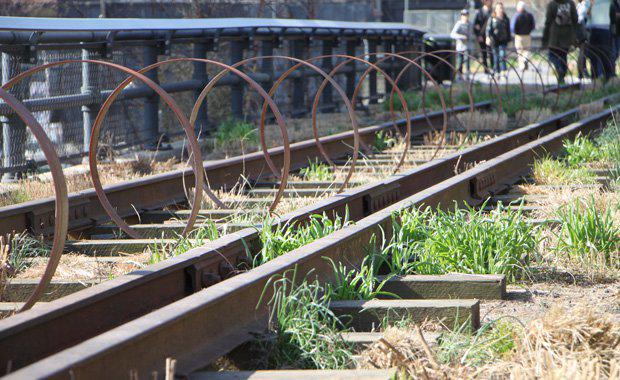
Interesting steel and sculptured add-ons mark the High Line rail line.
In turn, the High Line precinct has attracted property developers, apartment complexes, galleries and eateries. If you’re looking for an example of recent urban gentrification then look no further. It helps too that the High Line is set to contribute about $1 billion in tax revenues to New York City over the next 20 years.
Watch: New York's New High Line Park
The High Line is an attraction worthy of all the praise and visitors to boot. However, Robert Hammond, one of the park’s founders has also labelled it a failure. He said that the park hasn’t been great for neighbours and residents living around the park and that they were too focused on design and not enough on interaction with residents and especially minorities.
“We were from the community. We wanted to do it for the neighborhood,” Hammond told CityLab earlier this year. “Ultimately, we failed.”
A coalition Hammond started called the High Line Network, which focuses on building “adaptive reuse” parks like the High Line, is working to deal with “the social problems that accompany economic success,” according to CityLab.
Hammond said he would do it differently if starting again.
“I want to make sure other people don’t make the mistakes we did, and learn how to deal with these issues,” Hammond said. “We certainly don’t have all the answers.”
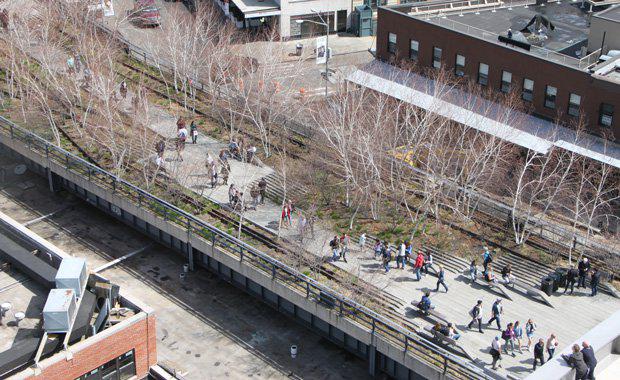
The popular High Line in Spring 2017. Over 8 million visitors were attracted to it in 2016 alone.
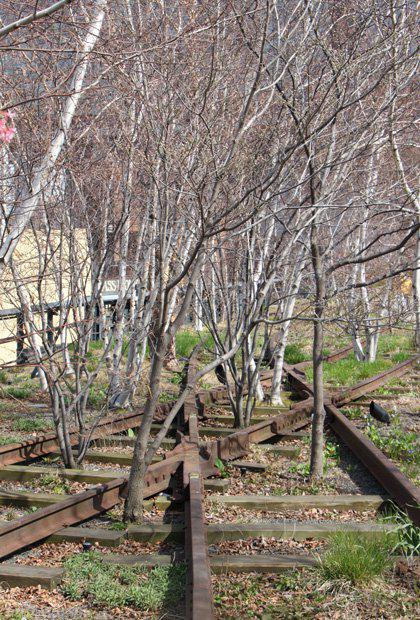
In what has become a powerful catalyst for private investment, The City re-zoned the area around the High Line in 2005, and the combination of the rezoning and the park has helped lead to billions in private investment,
High Line New York Highlights
The High Line start hugs the massive Hudson Yards redevelopment which is billed as New York’s largest development since the famous Rockefeller Center was completed.
Framed by the 28-acre Hudson Yards rail yard, two platforms bridge over 30 active train tracks, three rail tunnels and the new Gateway Tunnel.
Construction is complete on 10 Hudson Yards and opened in May 2016, it is fully leased to a variety of companies including high end fashion names, SAP and Boston Consulting Group. Under construction is 30 Hudson Yards which at 1,296 feet high will be New York’s second largest office building and feature a ‘who’s who’ of corporate American tenants.
A third office tower is part of the master plan that also includes 4,000 residences, a new hotel and a dynamic retail space, all due for opening in 2018-19.
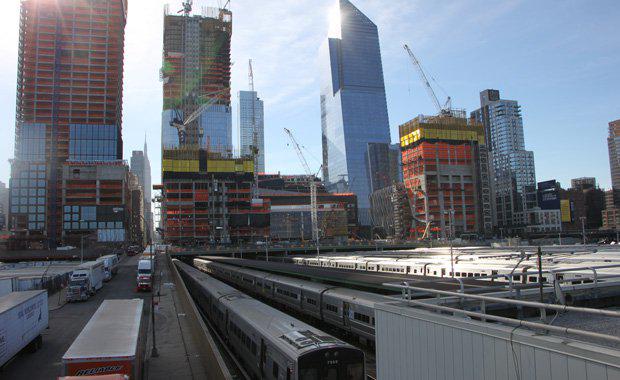
The Hudson Yards development is in full swing at the northern end of the High Line park.
Amongst the influx of residential apartments to the West Chelsea area includes the only New York building designed by the late British-Iraqi architect Zaha Hadid.
The almost complete 520 West 28th development on the High Line will offer 39 distinct residences over 11 storeys plus a number of new art gallery spaces which will be located in and around the base of the building. This Chelsea precinct has become a haven for art galleries and will also welcome the creation of the 'High Line Nine' - a collection of full service boutique exhibition spaces located adjacent to the building beneath the High Line.
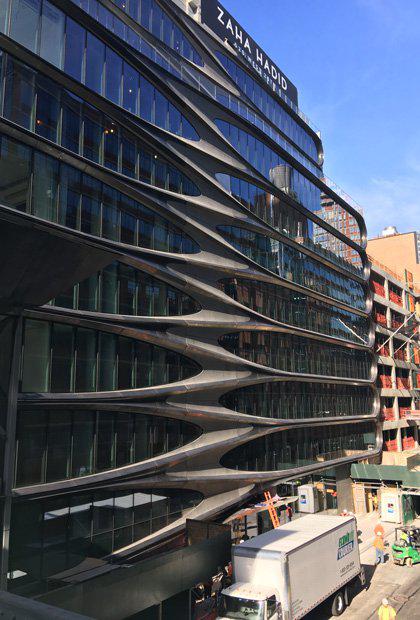
520 West 28th development designed by Zaha Hadid is nearly complete.
Developed by Related Companies, Abington House on the High Line is a 312-unit luxury rental building with views down the High Line all the way to 14th Street.
Designed by New York architectural firm Robert A.M. Stern this solid brick building overlooks the High Line and takes its design inspiration from the industrial strength that lies at New York's core.
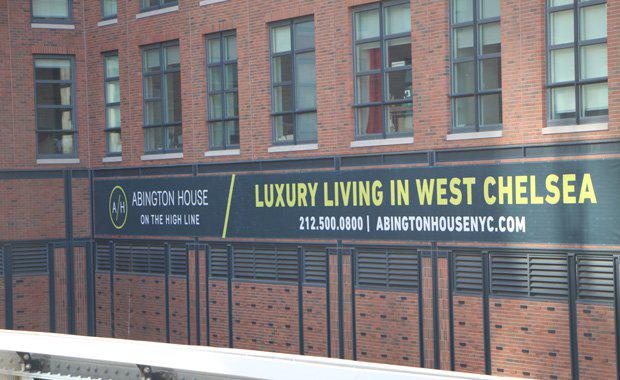
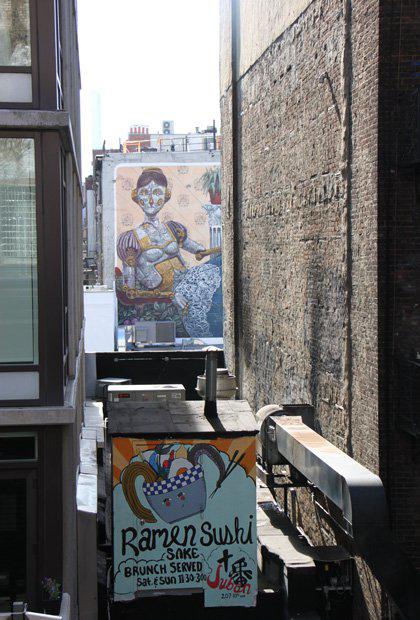
Above and below - The park is a mecca for local artists with some very colourful and topical works.
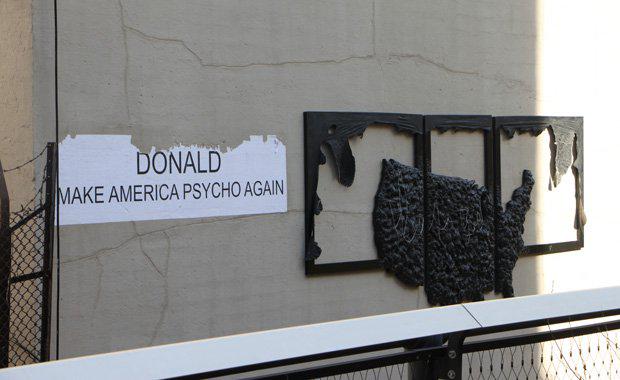
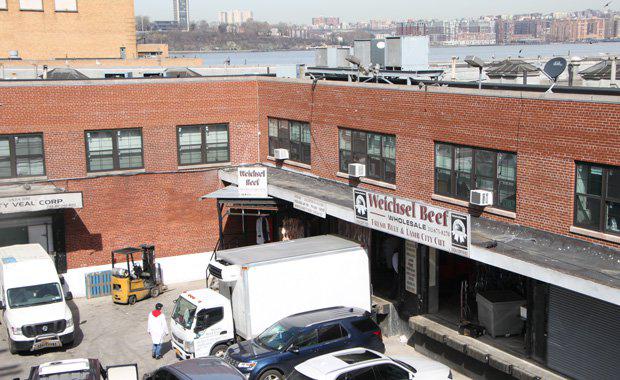
Weichsel Beef is one of the few meat wholesalers remaining in the now trendy meatpacking district though they themselves were forced to move a couple of blocks a few years ago to make way for the new Whitney Museum of American Art building.
The Whitney Museum of American Art moved into a new building located at the intersection of Gansevoort and Washington Streets, and was built on a previously city-owned site and marks the southern entrance to the High Line park. Construction was completed in 2015.
Depending on which way you choose to do the High Line it is either the end of the walk or the start. Whichever way, the Whitney is a great inclusion on the walk and features over 600 works of art from over 400 artists with a focus on works from the 20th and 21st centuries.
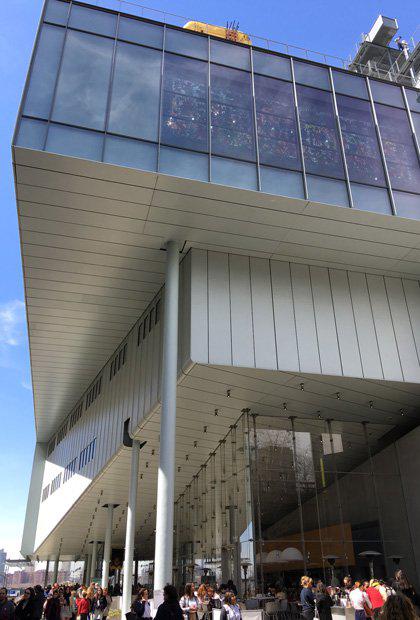
The Whitney Museum of American Art is located at the southern end of the High Line park.
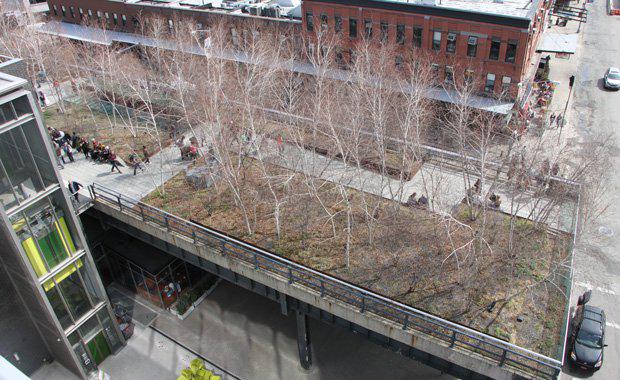
A glass elevator takes you down to street level where you can access the entrance to the Whitney.
High Line New York Facts
1980 - the last train runs on the High Line
The length is 1.45 miles (2.33 km)
Over 350 species of perennials, grasses, shrubs, vines, and trees
Over 450 programs and activities each year
It was originally built in 1934 as part of a massive infrastructure project called the West Side Improvement. It lifted train traffic 30 feet in the air, removing dangerous trains from the streets of Manhattan’s largest industrial district.
The design is inspired by the landscape that grew on the High Line during the 25 years after the trains stopped running.
Owned by the City of New York, the High Line is a public park maintained, operated, and programmed by Friends of the High Line, in partnership with the New York City Department of Parks & Recreation.
There are numerous entry and exit points along the length of the park - a mix of elevators and stairs.
Similar Inspired Projects
The Underline, Miami
The vision is to transform the under-utilised land below Miami’s MetroRail, from the Miami River to Dadeland South Station, into a 10-mile iconic linear park, world-class urban trail and living art destination.
The Underline will connect communities, improve pedestrian and bicyclist safety, create over a hundred acres of open space with restored natural habitats, encourage a healthy lifestyle, provide an easily accessible place to exercise, create a mobility corridor that integrates transit, car, biking and walking, provide a 10-mile canvas for artistic expression, attract development along US1, and generate significant economic impact.
Skygarden, Seoul
The South Korean capital of Seoul is getting a massive urban garden that rivals the High Line.
Named the Skygarden, the project will turn an abandoned overpass into a lush public park with over 24,000 plants. In 2015, the Dutch architecture firm MRVDV won a competition launched by the city to design it. Construction of the estimated $US33 million garden (funded by the local government) started a year later.
The Skygarden is nearly complete, and is set to open on May 20, 2017.
Words and photographs by Brenton Gibbs












